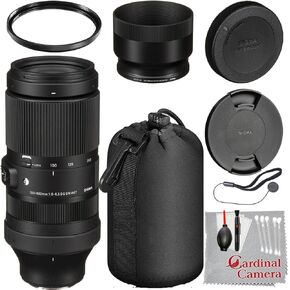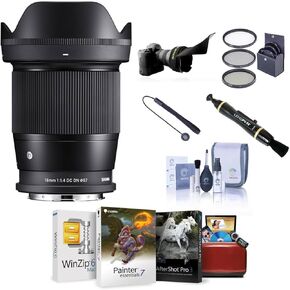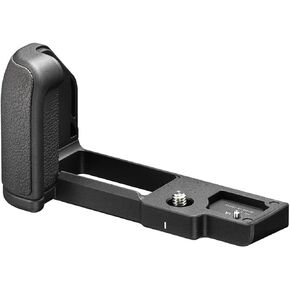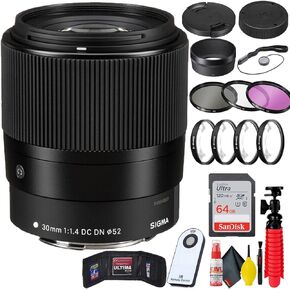- Shopping, made easy.
- /
- Get the app!
Sigma 17-50 mm F2.8 EX DC OS HSM.
Figure 17-50 mm F2.8 EX DC OS HSM.
Example image of 17-50 mm F2.8 EX DC OS HSM. Our bright EX standard zoom lens meets all expectations for such a representative of this class. The lens is ideal for snapshots, landscape pictures, group images, architectural shots or travel photography. The consistently high light intensity guarantees optimal light output and thus allows short shutter speeds that minimise the risk of blurring. The HSM (Hyper Sonic Motor) ensures fast and quiet autofocus and lets you react quickly. The SML (Super Multi Layer) coating prevents ghosting caused by reflections on the sensor surface and delivers images with balanced colour balance. Thanks to the inner focusing, the front lens does not rotate with you when focusing, so nothing stands up to the use of a tulip-shaped lens hood and a circular polarising filter.
This bright lens has been developed for digital cameras with APS-C sensor and has SIGMA OS (Optical Stabilizer) technology, which allows up to approx. 4 times longer from your free hand without wobbling your pictures. If the camera system is already equipped with image stabilisation, the Hybrid Optical Stabilizer of the lens can be used in its place, which also stabilises the viewfinder image, which allows better control of sharpness and image construction. Two FLD (F low dispersion) glass elements whose imaging performance is equivalent to that of fluoride glass, as well as two blank pressed glass lenses and a hybrid sphere effectively eliminate all colour defects. The lens has excellent light output and delivers sharp, high-contrast images at all focal lengths even when the aperture is open. Thanks to the 7 slats, which allow an almost round aperture opening, a very pleasant bokeh is created outside the level of sharpness. Thanks to the internal focusing, the front lens does not rotate, which allows the use of a tulip shaped lens hood and the comfortable use of a polarising filter.
- Unique design.
Exclusive quality, non-slip design, elegant finish - these are the features of our professional rail. The EX symbol features our sophisticated lens series. In addition to the high quality standard, these products are characterised by exclusive focal length ranges and high light intensities. The excellent performance features of the SIGMA EX lenses, the uncompromising design, perfect handling and excellent durability meet the requirements of photographers at the highest level. EX lenses - the better choice.
- APS-C sensor suitable.
First of all, the tempering technology and the construction of the DC lenses, whose calculations are based on the digital requirements, largely prevent light reflections from the sensor on the reverse objective lens. In addition, the DC lenses offer you impressive image quality despite its low weight and compact size, which meets the requirements of digital SLR cameras. These lenses are limited to the viewing angle, which is only used by most DSLR cameras anyway - to the viewing angle of the cameras with a sensor size in the so-called APS-C format. The sensors of most digital SLR cameras are smaller than the 35 mm film with its 24 x 36 mm format and have the dimensions of the APS-C film format. Therefore, you cannot use the DC lenses on a full-frame digital camera or an analogue film camera. They inevitably received shadows in the picture corners. By limiting the image angle to this APS-C format, it is possible to achieve a considerable imaging performance with reasonable construction effort. The less complex design affects the size and weight of the DC lenses. The lower effort ensures a significant cost savings, which we pass on to our customers. With our DCs you get powerful lenses at extremely attractive prices. Left with OS, right without OS.
When lenses of the DC series are used on 35 mm SLR cameras or digital cameras whose image sensors are larger than the APS-C format, vignettes occur in the image.
- Optical stabiliser.
Sensors in the lens detect camera movements that can cause a blurring in the image and in combination with a movable suspended lens element, these movements are compensated. Consequently, your photographic possibilities are significantly increased in hands-free photography. Stabilised lenses allow you to shoot 3-4 exposure levels longer than usual shake free from your hand. On camera models that are already equipped with a stabiliser, you have the choice whether you use the stabiliser of the camera or that of the lens. However, stabilisers in the lens always bring the advantage that they also provide you with a stabilised viewfinder image. Nothing stands in the way of an accurate assessment of the image and an exact use of the focus.
MTF - Chart
A motor with speed.
HSM lenses use a motor powered by ultrasonic waves. This technology offers you a very fast, exact and almost silent way of automatic focusing. Two different types of HSM ultrasonic drive are used in our lenses. On the one hand, the HSM ring motor, which is mainly installed in the high-quality EX lenses. This HSM drive allows you to manually enter AF operation at any time. On the other hand, an HSM micromotor is mainly used in compact lenses, the so-called all-round zoom lenses. Here, manual intervention in AF operation is not possible. MTF - modulation transfer function.
The MTF (Modulation Transfer Function) is one of the measurement methods that allow you to determine the performance of a lens and its contrast behaviour at different local frequencies. The horizontal axis expresses the distance of the centre of the image to the edge in millimetres, the vertical axis expresses the contrast value (highest value is 1). The 10 lines/mm indicates the contrast behaviour of the lens (red lines), the values for 30 lines/mm express the resolution capacity (green lines), each when the aperture is open. Lines that run parallel to the circle diameter are called sagittal lines (solid line), transverse lines are called tangential lines (dotted line).
 Sigma 100-400mm f/5-6.3 DG DN OS Contemporary Lens (Sony E) + Camera Case + UV Filter + Cap Keeper + Cleaning Kit + More (11pc Bundle)
KWD 321.500
Sigma 100-400mm f/5-6.3 DG DN OS Contemporary Lens (Sony E) + Camera Case + UV Filter + Cap Keeper + Cleaning Kit + More (11pc Bundle)
KWD 321.500
 Sigma 16mm f/1.4 DC DN Contemporary Lens for L Mount, Bundle with ProOptic 67mm Filter Kit, Cleaning Kit, Lens Cap Tether, Flex Lens Shade, Mac Software Kit, Lens Cleaner
KWD 186
Sigma 16mm f/1.4 DC DN Contemporary Lens for L Mount, Bundle with ProOptic 67mm Filter Kit, Cleaning Kit, Lens Cap Tether, Flex Lens Shade, Mac Software Kit, Lens Cleaner
KWD 186
 Sigma HG-21 Large Hand Grip for fp Mirrorless Digital Camera
KWD 41.500
Sigma HG-21 Large Hand Grip for fp Mirrorless Digital Camera
KWD 41.500
 Sigma 30mm f/1.4 DC DN Contemporary Lens for Canon EF-M + 64GB SD Card + UV Filter Kit + Close Up Filter Kit + Lens Cap + Memory Card Wallet + Tripod + Wireless Remote Shutter + Cleaning Kit
KWD 155.500
Sigma 30mm f/1.4 DC DN Contemporary Lens for Canon EF-M + 64GB SD Card + UV Filter Kit + Close Up Filter Kit + Lens Cap + Memory Card Wallet + Tripod + Wireless Remote Shutter + Cleaning Kit
KWD 155.500